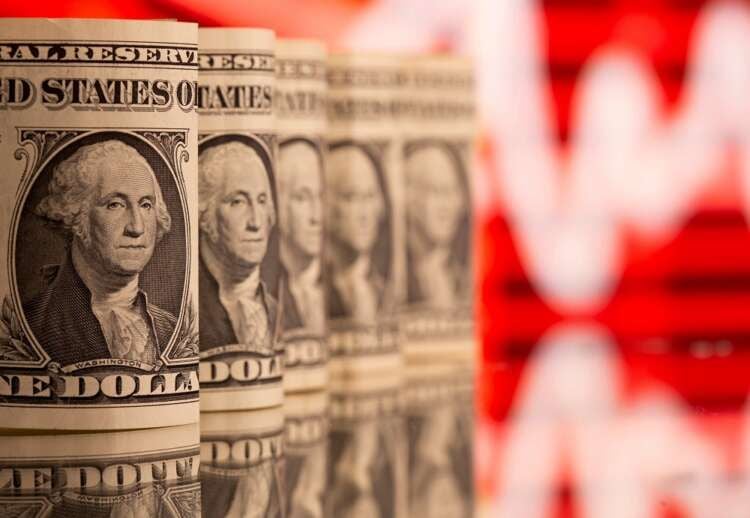Dollar’s post-Fed fall to one-month low lifts other currencies
Dollar’s post-Fed fall to one-month low lifts other currencies
Published by Wanda Rich
Posted on July 29, 2021

Published by Wanda Rich
Posted on July 29, 2021

By Sujata Rao
LONDON (Reuters) -The dollar slipped to a one-month low on Thursday after the U.S. Fed’s reassurance that interest rate hikes remain distant gave a major boost to most other currencies from the Aussie dollar to the Chinese yuan.
China’s efforts to soothe stock market jitters precipitated by its own regulatory crackdown on some sectors also helped, with the yuan rising for the second day in a row to touch a one-week high versus the greenback.
A month of gains for the dollar had already lost momentum leading in to Wednesday’s Federal Reserve meeting and Chairman Jerome Powell’s remark that rate increases were “a ways away” was enough to tip it lower still. (nL1N2P30V1)
U.S. Treasury yields trended lower after the statement and on Thursday the 10-year yield slipped further and the real yield — adjusted for inflation — tumbled to a new record low around minus 1.175%.
By 1115 GMT, the dollar inched 0.2% lower against a currency basket at 92.05, down for the fourth straight day.
“We saw the dollar weaken overnight and that’s people taking profit on long dollar positions,” said Peter Kinsella, head of FX strategy at UBP.
He said it appeared likely the Fed would commence tapering around year-end with rate rises starting in 2023.
“Mr Powell told us what we already knew. We got no new indication on timing of taper or rate hikes and what that means is that the payrolls data will be pretty important for the next two-three months,” Kinsella added.
The dollar moves allowed the euro to edge up to $1.188, a two-week peak.
The Australian and New Zealand dollars, reliant on world and Chinese economic growth, extended gains made on Wednesday, adding more than 0.4%, though the Aussie was capped by concerns a lengthening COVID-19 lockdown in Sydney would drag on the national economy.
The Canadian dollar also rose as much as 0.6% to two-week highs
Sterling, which has been surging on optimism over the re-opening of the British economy, touched a one-month high of $1.397.
Dust was settling after the storm triggered by Beijing’s decision to tighten curbs on the for-profit tutoring sector, soon after its campaign against tech giants and new regulations for home-grown companies looking to list overseas.
China’s Securities and Regulatory Commission (CSRC) on Wednesday held a meeting with executives of top global investment banks to calm financial markets nerves, people familiar with the matter told Reuters.
The offshore-traded yuan rose 0.4% and an emerging currency index hit two-week highs, up 0.6%
Kinsella did not anticipate much yuan weakening from here
“It’s important to remember that China still has a closed capital account so they can control what the yuan does. We will go back to where we were when people get more relaxed on the regulatory outlook,” he added.
Global COVID-19 cases remain a concern for investors, although the safe-haven Japanese yen and Swiss franc were both lower on Thursday.
(Reporting by Sujata Rao; Editing by Kim Coghill and Mike Harrison)
By Sujata Rao
LONDON (Reuters) -The dollar slipped to a one-month low on Thursday after the U.S. Fed’s reassurance that interest rate hikes remain distant gave a major boost to most other currencies from the Aussie dollar to the Chinese yuan.
China’s efforts to soothe stock market jitters precipitated by its own regulatory crackdown on some sectors also helped, with the yuan rising for the second day in a row to touch a one-week high versus the greenback.
A month of gains for the dollar had already lost momentum leading in to Wednesday’s Federal Reserve meeting and Chairman Jerome Powell’s remark that rate increases were “a ways away” was enough to tip it lower still. (nL1N2P30V1)
U.S. Treasury yields trended lower after the statement and on Thursday the 10-year yield slipped further and the real yield — adjusted for inflation — tumbled to a new record low around minus 1.175%.
By 1115 GMT, the dollar inched 0.2% lower against a currency basket at 92.05, down for the fourth straight day.
“We saw the dollar weaken overnight and that’s people taking profit on long dollar positions,” said Peter Kinsella, head of FX strategy at UBP.
He said it appeared likely the Fed would commence tapering around year-end with rate rises starting in 2023.
“Mr Powell told us what we already knew. We got no new indication on timing of taper or rate hikes and what that means is that the payrolls data will be pretty important for the next two-three months,” Kinsella added.
The dollar moves allowed the euro to edge up to $1.188, a two-week peak.
The Australian and New Zealand dollars, reliant on world and Chinese economic growth, extended gains made on Wednesday, adding more than 0.4%, though the Aussie was capped by concerns a lengthening COVID-19 lockdown in Sydney would drag on the national economy.
The Canadian dollar also rose as much as 0.6% to two-week highs
Sterling, which has been surging on optimism over the re-opening of the British economy, touched a one-month high of $1.397.
Dust was settling after the storm triggered by Beijing’s decision to tighten curbs on the for-profit tutoring sector, soon after its campaign against tech giants and new regulations for home-grown companies looking to list overseas.
China’s Securities and Regulatory Commission (CSRC) on Wednesday held a meeting with executives of top global investment banks to calm financial markets nerves, people familiar with the matter told Reuters.
The offshore-traded yuan rose 0.4% and an emerging currency index hit two-week highs, up 0.6%
Kinsella did not anticipate much yuan weakening from here
“It’s important to remember that China still has a closed capital account so they can control what the yuan does. We will go back to where we were when people get more relaxed on the regulatory outlook,” he added.
Global COVID-19 cases remain a concern for investors, although the safe-haven Japanese yen and Swiss franc were both lower on Thursday.
(Reporting by Sujata Rao; Editing by Kim Coghill and Mike Harrison)
Explore more articles in the Trading category











